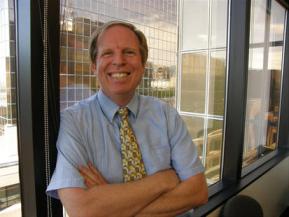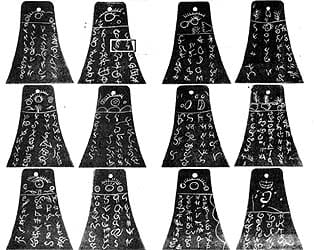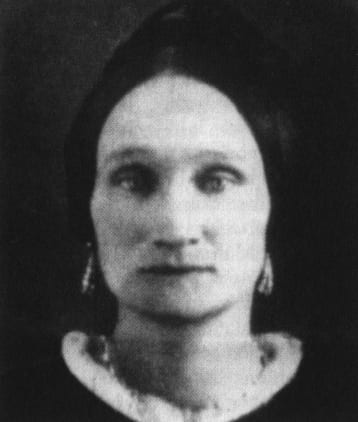And now abideth faith, hope, charity, these three; but the greatest of these is charity[1]
Last month, I had the pleasure of meeting with members in Norway, Sweden, and Scotland. I met with members who had strong testimonies, members who were struggling, and members who no longer believe. It was a wonderful experience, and I enjoyed every minute of it. Ok, almost every minute. There were some moments of being a bit uncomfortable in a discussion or two. But, by and large, I really enjoyed it.
With that in mind, I would like to tell you about my interaction with some of the Saints in Scotland. I loved my time in the Nordic countries as well, but I can only talk about one thing at a time. In Scotland, I met with three different stakes. I was really impressed that all of the stake presidents were kind and really cared about all of their people. They loved them. That came across strongly in their words and actions.
In two of the stakes, the Stake presidents had me meet with members who had concerns about the Church. [2]
Now, first of all, it is difficult to put a label on these members. We love to put labels on people. We routinely talk about active and less-active members in our wards. We sometimes even talk about faithful, or less faithful. I have heard labels such as disaffected, discouraged, or in extreme cases disloyal. I don’t think any of those labels apply perfectly to the individuals that I met with, and certainly the word disloyal would not apply at all. The best label I could have would be brothers and sisters in the Gospel who have concerns. Yes, some of them no longer attend church, but all of them wanted things to be better.
In my first meeting, I was one-on-one with a member who attends church but has questions.[3] He had spent significant time reading most of the Websites that FairMormon spends time responding to. In other words, they were Websites that I wouldn’t recommend for people who are interested in becoming and remaining faithful. But, the man was a lovely man. A wonderful man. A man whom I hope I can now count as my friend. His questions were not a burden or a problem. He wanted answers. He had been unable to find them. He had read some responses, but didn’t find them all persuasive. This made him concerned. He saw value in the Church, and value in FairMormon. He saw value in his family attending church. He made helpful suggestions. We left with him giving me a list of concerns and me promising to read them all carefully. At this point, I have been really busy catching up at work, but I have read some of them and intend to read and examine all of them.
In the second meeting I walked in and found 15 to 20 (I didn’t count) people sitting there, most of them having significant questions about the Church. While things were a bit tense at first, after we got to know each other better, it became more of an exchange of experiences. Things became much more relaxed. As we were talking, I saw that these were good people. Salt-of-the-earth people. People who I would truly value and cherish. Let me put it this way, if I were sitting at a ward dinner, and one of these people came to sit down next to me, I would be really happy. If I saw them before they saw me, I would invite them over. I would love to have them at my house for dinner. If they ever come to Northern California, the invitation stands open. They were honest and sincere. They had legitimate concerns that they had not been able to reconcile, partly because, in my opinion, they fully embraced the outside narrative and discounted the faithful narrative. But, they had reasons for doing so. Did I convince anyone? I doubt it. That wasn’t really the point. I hope that by the time I left they became a little more trusting of the sources that promote the positive narrative, and a little more skeptical of the sources that promote the negative narrative. For my part, I know that I became more sympathetic to their concerns.
Think about this. They had concerns about the Church. Some of them don’t attend any more. The stake president had called and invited them to this meeting at the Church building and they came. They showed up! If I were in their position, I’m not sure I would have done the same.
Sometimes in our discourse about the truth claims of the Church, we forget that there are real people on the other side of the issue. In a recent blog post about online discussions Sean Blanda writes:[4]
It’s a preference to see the Other Side as a cardboard cutout, and not the complicated individual human beings that they actually are.
I see this happening on both sides.
The active (faithful, believing, true blue, whatever) members see the questioning (disaffected, discouraged, less active, whatever) members as attacking them personally when they raise questions about the fundamental truth claims of their belief. I believe some of this comes from a fear that we might not be able to answer the questions, or that there is no answer to the questions. This means we sometimes lash out in an attempt to silence them.
The questioning members, on the other hand, see this wall of silence from people who don’t want to hear their questions. Conversations, attempts to connect, and attempts to correct from the non-questioning (fully believing) side are sometimes seen in a less than charitable light. Let’s face it, many members have not studied the issues, and often their attempts to answer the questions are simply incorrect. Those sincere, but unsatisfying answers are seen as manipulative and misleading. Other times, for those who have completely left, their leaving experience was so painful that they feel justified in giving a little payback. I have been on the receiving end of that on more than one occasion.
I have seen some very hurtful things. The blogger Sean Blanda further writes:
Over time, this morphs into a subconscious belief that we and our friends are the sane ones and that there’s a crazy “Other Side” that must be laughed at — an Other Side that just doesn’t “get it,” and is clearly not as intelligent as “us.” But this holier-than-thou social media behavior is counterproductive, it’s self-aggrandizement at the cost of actual nuanced discourse and if we want to consider online discourse productive, we need to move past this.[5]
This is the message I would like to get across. We need to have charity for each other. We need to see others as our brothers and sisters – whether you or they remain in the Church or not. No matter which side you are on. Based on their experiences and information, the “Other side” is being rational. Those that leave are not evil, and those that stay are not “Living in a bubble.”[6] Charity never faileth. Let’s try to put that into practice.
[2] I would like to talk about all three stakes, but I have to limit this to get through the post. You don’t want to have to read a post the length of War and Peace.
[3] In the interest of full disclose my wife and the Stake President were there as well. But, the two of us did most of the talking.
[4] https://medium.com/@SeanBlanda/the-other-side-is-not-dumb-2670c1294063#.d50kq3cjm
[5] ibid
[6] It would be difficult to portray me, or other FairMormon volunteers, as living in a bubble as we have read all of the criticisms that are out there. I have been reading anti Mormon literature since I was 14 years old. A few of my non-Mormon friends have tried to convert me. FairMormon gets multiple questions every day. Through long experience, I have learned to be skeptical of the less faithful narrative.

Scott Gordon is president of FairMormon.
Picture at the top of the blog is from Glamis Castle in Scotland. Source:Rev Stan (Flickr: Glamis Castle) [CC BY 2.0 (http://creativecommons.org/licenses/by/2.0)], via Wikimedia Commons









